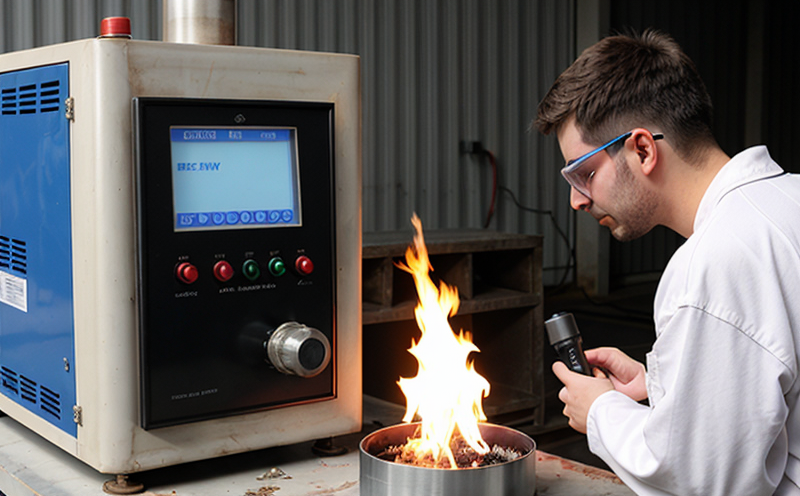Thermal & Heat Transfer Testing
The process of thermal and heat transfer testing is essential in ensuring that HVAC equipment functions efficiently under various conditions. This type of testing focuses on the evaluation of how well a system can manage heat, which directly impacts its performance and longevity.
In this context, heat transfer involves the movement of heat from one medium to another or within a single medium due to temperature differences. The main modes of heat transfer are conduction, convection, and radiation. HVAC equipment must be designed to efficiently handle these processes to ensure optimal performance in different environments.
For instance, during winter months, an HVAC system needs to transfer heat from the inside of a building to the outside while maintaining indoor comfort levels. Conversely, during summer, it should extract heat from indoors and dissipate it outdoors. Understanding and accurately testing these thermal properties is crucial for compliance with international standards such as ISO 8991 which provides guidelines for the determination of air conditioning performance.
The testing process involves subjecting HVAC components to controlled environments that simulate real-world conditions. This allows engineers to identify any potential inefficiencies early in development, thereby improving overall product quality and reliability. Proper thermal management also plays a significant role in reducing energy consumption, which is increasingly important given global concerns about sustainability and environmental impact.
From a practical standpoint, testing these systems helps manufacturers meet stringent regulatory requirements imposed by governments worldwide. For example, the European Union’s Energy Efficiency Directive mandates that all HVAC equipment must comply with certain energy efficiency criteria.
In summary, thermal and heat transfer testing is vital for ensuring that HVAC systems operate efficiently under diverse environmental conditions. By accurately measuring how well a system manages heat, we can enhance its performance, reduce costs associated with unnecessary energy usage, and contribute positively towards sustainability goals.
Benefits
Thermal & Heat Transfer Testing offers numerous advantages for manufacturers, installers, and end-users alike:
- Enhanced Efficiency: Ensures that HVAC systems operate at peak efficiency by identifying areas where heat loss or gain could be minimized.
- Better Comfort Levels: By accurately controlling temperature distribution within a space, comfort levels are improved for occupants.
- Increased Durability: Identifying weak points in the system through testing helps extend the lifespan of HVAC equipment.
- Compliance Assurance: Ensures that products meet necessary regulatory standards and industry norms.
- Economic Savings: Optimized systems lead to lower operational costs, particularly when it comes to energy consumption.
The benefits extend beyond just the immediate product itself; they have broader implications for society as a whole. Improved efficiency translates into reduced carbon footprints and contributes positively towards global efforts aimed at combating climate change.
Why Choose This Test?
Selecting the right testing method is critical when dealing with HVAC equipment since it affects both the accuracy of results obtained and the reliability of the final product. Here’s why choosing thermal & heat transfer testing makes sense:
- Comprehensive Evaluation: It provides a thorough assessment of how effectively different parts of an HVAC system manage heat.
- Data Accuracy: Using advanced equipment and techniques ensures precise measurement, leading to more reliable data.
- Variety Of Applications: The tests can be customized according to specific needs, whether it’s for new product development or quality assurance during production runs.
Besides these technical reasons, there are also business considerations. Choosing reputable labs ensures that you get unbiased results which can help build trust with customers and stakeholders. Moreover, adhering strictly to industry standards enhances reputation and opens up opportunities for market expansion.
Use Cases and Application Examples
| Application Example | Description | Testing Methodology | Expected Outcome |
|---|---|---|---|
| Data Centers | HVAC systems in data centers need to maintain constant temperatures and humidity levels. | Conduction, convection, and radiation tests are conducted using controlled environmental chambers. | Optimized temperature control, reduced energy consumption, enhanced reliability. |
| Airports | HVAC systems in airports must handle large volumes of air with varying temperatures. | Thermal imaging is used to identify hotspots and areas where heat transfer can be improved. | Better thermal management, improved passenger comfort. |
| Offices | HVAC systems in office buildings need to provide comfortable indoor environments while being energy efficient. | Load testing simulates real-world conditions and evaluates system performance under stress. | Improved air quality, reduced utility costs. |
| Hospitals | HVAC systems in hospitals must maintain strict temperature control to prevent the spread of infections. | Pressure drop testing ensures that airflow is consistent throughout the building. | Enhanced patient care through optimal thermal conditions. |
The above examples illustrate how different applications benefit from thorough heat transfer testing. Each case study highlights unique challenges faced by HVAC systems and demonstrates why precise evaluation is necessary.





